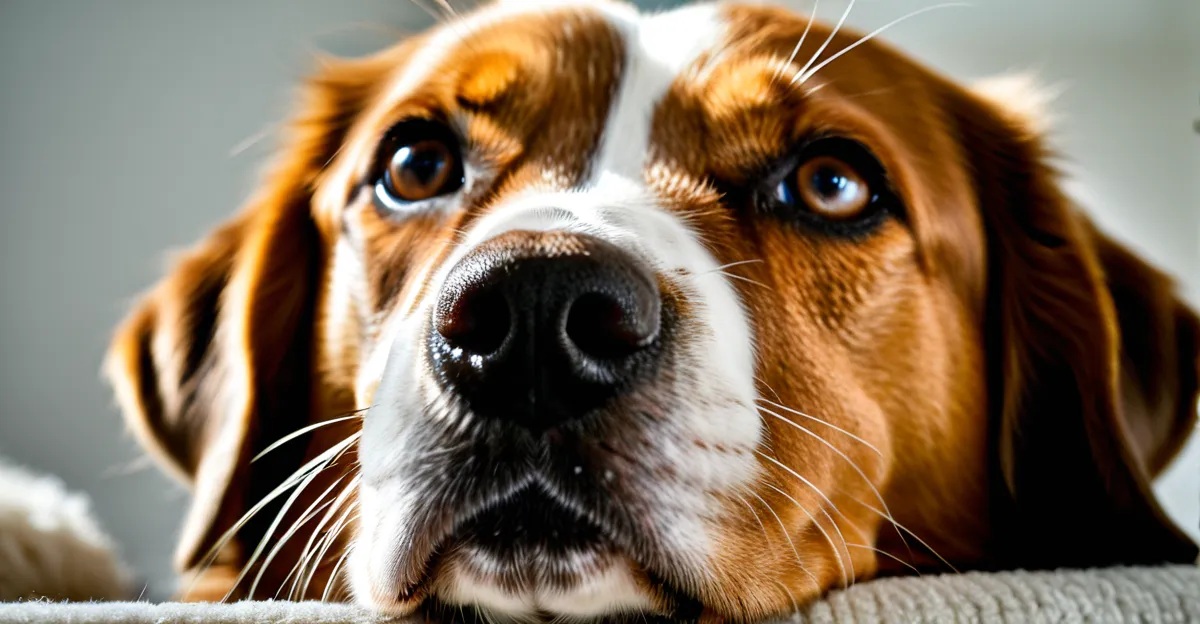The Ultimate Guide to Grooming Your Pet in the UK
Grooming your pet is an essential part of pet care, ensuring your dog, cat, or any other furry friend remains healthy, happy, and well-groomed. In the UK, where pet ownership is a beloved tradition, knowing the best ways to groom your pet can make a significant difference in their overall well-being. Here’s a comprehensive guide to help you navigate the world of pet grooming.
Understanding Your Pet’s Grooming Needs
Before diving into the specifics of grooming, it’s crucial to understand the unique needs of your pet. Different breeds and types of pets require different levels of grooming.
Have you seen this : How Do Pet Adoption Processes Differ Across the UK?
Dogs
Dogs, in particular, have varying grooming needs based on their breed and coat type. For example:
- Short Haired Dogs: Breeds like the Bulldog or the Beagle have short coats that require minimal grooming. However, they still need regular brushing to remove dead hair and distribute skin oils.
- Long Haired Dogs: Breeds such as the Afghan Hound or the Yorkshire Terrier have long, flowing coats that need regular brushing to prevent matting and tangling.
- Curly Haired Dogs: Breeds like the Poodle or the Bichon Frise require regular grooming to prevent matting and to keep their curly coats in good condition.
Cats
Cats are generally low-maintenance when it comes to grooming, but they still need some attention:
This might interest you : How Do UK Pet Owners Choose the Best Products for Their Furry Friends?
- Short Haired Cats: Most domestic cats have short coats that require occasional brushing to remove loose hair and distribute skin oils.
- Long Haired Cats: Breeds like the Persian or the Maine Coon need regular brushing to prevent matting and tangling.
Essential Grooming Tools
To groom your pet effectively, you’ll need the right tools. Here are some essentials:
For Dogs
- Brush: A good quality brush is essential for removing tangles and mats from your dog’s coat. There are different types of brushes, such as slicker brushes, pin brushes, and bristle brushes, each suited to different coat types.
- Nail Clippers: Keeping your dog’s nails trimmed is crucial to prevent overgrowth, which can cause discomfort and health issues.
- Shampoo and Conditioner: Choose a shampoo and conditioner specifically formulated for your dog’s coat type.
- Towel: A good towel is necessary for drying your dog after bathing.
For Cats
- Brush: A soft-bristled brush or a grooming glove is ideal for cats, helping to remove loose hair and distribute skin oils.
- Nail Clippers: Cats also need their nails trimmed regularly to prevent overgrowth.
- Shampoo and Conditioner: While cats are generally self-cleaning, they may occasionally need a bath. Use a shampoo and conditioner specifically formulated for cats.
Step-by-Step Grooming Guide
Brushing Your Pet
Brushing is one of the most important aspects of grooming. Here’s how to do it effectively:
For Dogs
- Choose the Right Brush: Select a brush that suits your dog’s coat type.
- Brush Regularly: Brush your dog at least once a week, or more frequently for long-haired breeds.
- Be Gentle: Start with gentle strokes and gradually increase the pressure as needed.
- Pay Attention to Trouble Spots: Areas like the armpits, behind the ears, and around the tail can be prone to matting.
For Cats
- Use a Soft Brush: Cats prefer soft-bristled brushes or grooming gloves.
- Brush in the Direction of the Hair: Always brush in the direction of the hair growth to avoid causing discomfort.
- Be Patient: Cats can be finicky, so start slowly and build up to more thorough brushing sessions.
Bathing Your Pet
Bathing is another crucial aspect of grooming, but it should be done carefully to avoid drying out your pet’s skin.
For Dogs
- Use the Right Shampoo: Choose a shampoo specifically formulated for your dog’s coat type.
- Bathe in a Quiet Area: Minimize stress by bathing in a quiet, distraction-free area.
- Avoid Over-Bathing: Dogs should be bathed as needed, but over-bathing can strip their coat of natural oils.
- Dry Thoroughly: Use a towel to dry your dog thoroughly, paying extra attention to the ears and paws.
For Cats
- Bathe Only When Necessary: Cats are generally self-cleaning, but they may need a bath if they get into something sticky or develop a strong odor.
- Use a Gentle Shampoo: Choose a shampoo specifically formulated for cats.
- Keep the Bath Short: Cats can become stressed quickly, so keep the bath as short as possible.
- Dry Gently: Use a towel to dry your cat gently, avoiding any rough handling.
Additional Grooming Services
Sometimes, it’s helpful to seek professional help for certain grooming tasks.
Professional Dog Grooming
- Full Groom: A full groom typically includes bathing, trimming, and styling your dog’s coat.
- Nail Trimming: Professional groomers can trim your dog’s nails safely and effectively.
- Microchipping: Some groomers offer microchipping services to ensure your dog can be identified if they ever get lost.
Pet Grooming Services at Home
Companies like Pets at Home Group Plc offer a range of grooming services that can be done at home or in their facilities. These services include:
- Full Groom: A comprehensive grooming session that includes bathing, trimming, and styling.
- Bath and Brush: A service that focuses on bathing and brushing your pet.
- Nail Clipping: Trimming your pet’s nails to prevent overgrowth[1].
Tips and Advice from Experts
Here are some tips and advice from veterinary professionals and experienced pet groomers:
Regular Grooming
“Regular grooming is essential for maintaining your pet’s health and well-being. It helps to prevent matting and tangling, reduces shedding, and can even help detect early signs of health issues,” says Dr. Jane Smith, a veterinarian with over 10 years of experience.
Be Patient
“Grooming can be a stressful experience for pets, especially if they are not used to it. Be patient and start slowly, gradually building up to more thorough grooming sessions,” advises Sarah Johnson, a professional dog groomer.
Use the Right Tools
“Using the right tools is crucial for effective grooming. Invest in a good quality brush, nail clippers, and shampoo specifically formulated for your pet’s coat type,” recommends Tom Davis, a pet care expert.
Practical Insights and Actionable Advice
Here are some practical insights and actionable advice to help you groom your pet effectively:
Create a Grooming Schedule
- Set a Regular Schedule: Plan out when you will groom your pet each week to ensure consistency.
- Start Early: Begin grooming your pet from an early age to help them get used to the process.
Make Grooming a Positive Experience
- Use Positive Reinforcement: Reward your pet with treats and praise during grooming sessions to make the experience positive.
- Be Gentle: Always handle your pet gently and with care to avoid causing discomfort or stress.
Seek Professional Help When Needed
- Consult Your Vet: If you’re unsure about any aspect of grooming, consult your vet for advice.
- Use Professional Grooming Services: If you’re not comfortable with certain grooming tasks, consider using professional grooming services.
Detailed Bullet Point List: Essential Grooming Tasks
Here is a detailed list of essential grooming tasks for your pet:
- Brushing:
- Use a brush suitable for your pet’s coat type.
- Brush in the direction of the hair growth.
- Pay attention to trouble spots like the armpits and behind the ears.
- Bathing:
- Use a shampoo specifically formulated for your pet’s coat type.
- Bathe in a quiet area to minimize stress.
- Avoid over-bathing to prevent drying out the skin.
- Nail Trimming:
- Use nail clippers designed for your pet’s nail type.
- Trim nails regularly to prevent overgrowth.
- Be careful not to cut the quick (the sensitive part of the nail).
- Ear Cleaning:
- Use a gentle ear cleaner.
- Avoid inserting the cleaner too deeply into the ear canal.
- Gently wipe away any dirt or debris.
- Dental Care:
- Use a pet-specific toothbrush and toothpaste.
- Brush your pet’s teeth regularly to prevent tartar buildup.
- Provide dental chews or toys to help clean teeth.
Comprehensive Table: Grooming Needs by Breed
Here is a comprehensive table outlining the grooming needs of various dog breeds:
| Breed | Coat Type | Grooming Needs |
|---|---|---|
| Afghan Hound | Long Haired | Regular brushing to prevent matting and tangling. Occasional bathing. |
| Bulldog | Short Haired | Minimal grooming. Occasional brushing to remove dead hair. |
| Poodle | Curly Haired | Regular grooming to prevent matting. Frequent bathing and trimming. |
| Yorkshire Terrier | Long Haired | Regular brushing to prevent matting and tangling. Occasional bathing. |
| Beagle | Short Haired | Minimal grooming. Occasional brushing to remove dead hair. |
| Persian | Long Haired | Regular brushing to prevent matting and tangling. Occasional bathing. |
| Maine Coon | Long Haired | Regular brushing to prevent matting and tangling. Occasional bathing. |
Quotes from Pet Owners
Here are some quotes from pet owners who have experienced the benefits of regular grooming:
- “Regular grooming has made a huge difference in my dog’s health and happiness. It’s also helped us bond and spend quality time together,” says Emily Wilson, owner of a long-haired Golden Retriever.
- “I was hesitant to groom my cat at first, but now it’s become a special bonding time for us. She loves the attention and it helps keep her coat in great condition,” says David Lee, owner of a short-haired cat.
Grooming your pet is a vital part of their care and well-being. By understanding your pet’s unique needs, using the right tools, and following a regular grooming schedule, you can help keep your pet healthy, happy, and well-groomed. Whether you choose to groom your pet at home or seek professional help, the key is to make grooming a positive and enjoyable experience for both you and your pet.







